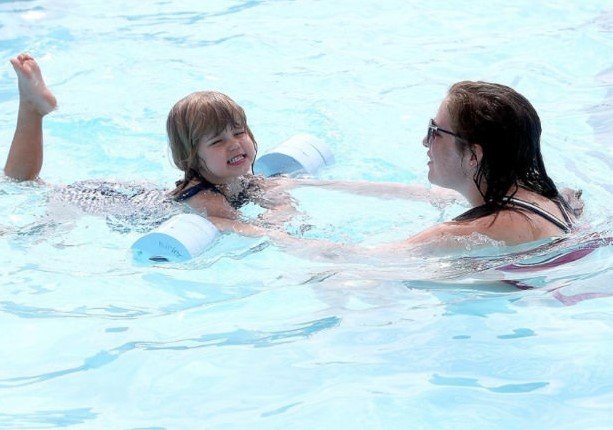Georgia is seeing a alarming spike in child drownings, with rates hitting a 20 year high according to state health data. Experts and local groups are pushing for better water safety education and access to swim lessons to save lives, especially as summer heat lingers into fall.
Rising Drowning Deaths Spark Urgent Calls for Action
Recent reports show drowning as the top cause of death for kids aged 1 to 4 in Georgia. Statewide figures from 2025 indicate over 50 accidental drownings so far this year, up from previous averages.
This trend mirrors national patterns, where the Centers for Disease Control and Prevention notes drowning claims thousands of young lives annually. In Georgia, backyard pools and lakes are common sites for these tragedies, often happening in seconds without a splash or cry for help.
Local leaders point to factors like limited access to affordable swim programs in rural areas. Urban spots like Atlanta see similar issues, with crowded public pools and uneven safety training.
The spike comes amid broader concerns, including a halted CDC drowning prevention program earlier this year. That effort aimed to share key findings on reducing risks but ended abruptly due to administrative changes.

Key Initiatives Driving Water Safety in Georgia
Groups across the state are stepping up to combat this crisis. The YMCA of Metro Atlanta, along with the Atlanta Water Safety Coalition, recently hosted free swim lessons at the Governors Mansion to mark Drowning Impact Awareness Month in August 2025.
These events teach basic skills like floating and reaching for safety. They also highlight the need for constant supervision around water.
Other efforts include the states SPLASH campaign by the Department of Natural Resources, which promotes safe boating and swimming habits. This initiative has reached thousands through community outreach and school programs.
Nationally, World Drowning Prevention Day on July 25, 2025, brought global attention to the issue. Stories from survivors and advocates underscored simple steps that can prevent lifelong disabilities or deaths.
In response to rising numbers, Georgia lawmakers are considering bills to fund more public swim classes. These would target low income families, where risks are higher due to barriers like cost and transportation.
Practical Steps Parents Can Take Right Now
Families play a crucial role in prevention. Experts recommend starting with home safety checks and building habits early.
Here are some essential tips:
- Install barriers around pools, such as fences at least four feet high with self latching gates.
- Enroll kids in swim lessons as young as possible; research shows this cuts drowning risk by up to 88 percent for toddlers.
- Designate a water watcher who stays focused without distractions like phones.
- Learn CPR through free community classes offered by groups like the Red Cross.
Beyond these, always use life jackets for non swimmers near open water. Avoid relying on floaties alone, as they can give a false sense of security.
For year round protection, experts suggest indoor swim programs during cooler months. This keeps skills sharp and builds confidence.
Community and Policy Changes Needed for Lasting Impact
Broader changes are essential to turn the tide. Coalitions like the Atlanta Water Safety group, formed in 2022, bring together nonprofits, schools, and health officials.
They focus on equity, ensuring all zip codes have access to resources regardless of income or background. Success stories include expanded lessons in underserved neighborhoods, leading to fewer incidents.
On the policy front, advocates call for mandatory water safety education in schools. Some states already require this, and Georgia could follow suit to educate the next generation.
A table below outlines drowning statistics and prevention impacts:
| Age Group | Annual Drownings in Georgia (2025 Est.) | Risk Reduction with Swim Lessons |
|---|---|---|
| 1-4 Years | 25 | 88% |
| 5-9 Years | 15 | 70% |
| 10-14 Years | 10 | 50% |
These numbers highlight how targeted actions can make a big difference.
Collaboration with national bodies like the American Academy of Pediatrics provides guidelines tailored to different ages. Their resources stress layers of protection, from supervision to emergency readiness.
Challenges and Hope on the Horizon
Despite progress, hurdles remain. Funding cuts, like the recent CDC program halt, slow down research and outreach. Warm weather in Georgia extends the risk season, making year round vigilance key.
Yet, positive shifts are emerging. Increased media coverage and events like the Atlanta campaigns are raising awareness. Parents report feeling more empowered after attending workshops.
Looking ahead, experts predict that with sustained efforts, drowning rates could drop by 30 percent in the next five years. This would require community buy in and continued investment.
As Georgia families navigate ongoing heat and water activities, staying informed is vital. Share this article with friends and comment below on your water safety tips to help spread awareness and save lives.
